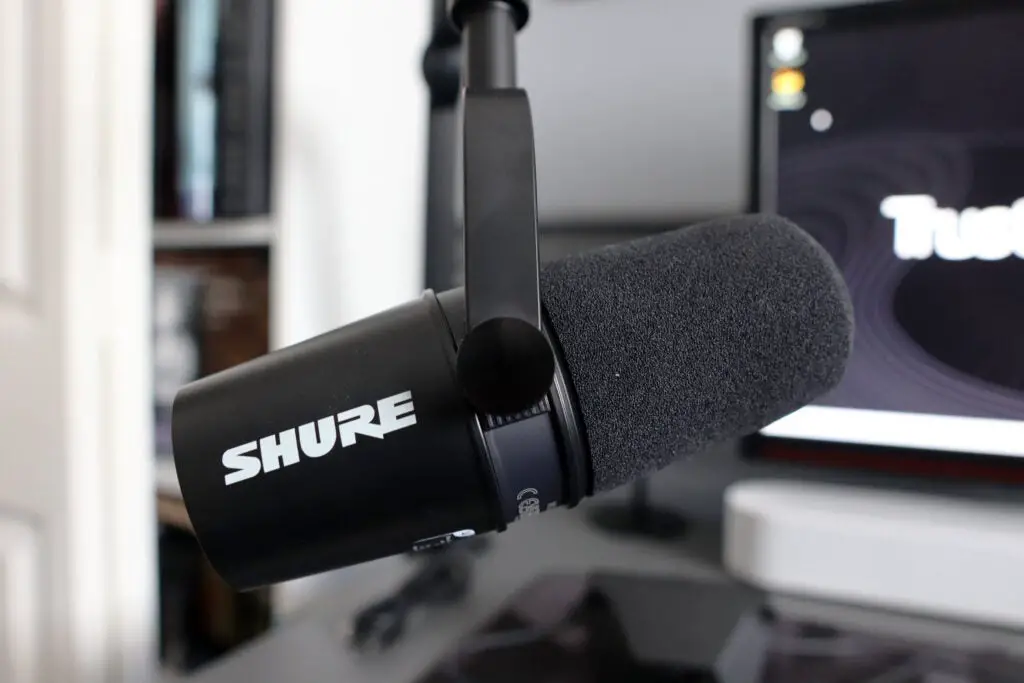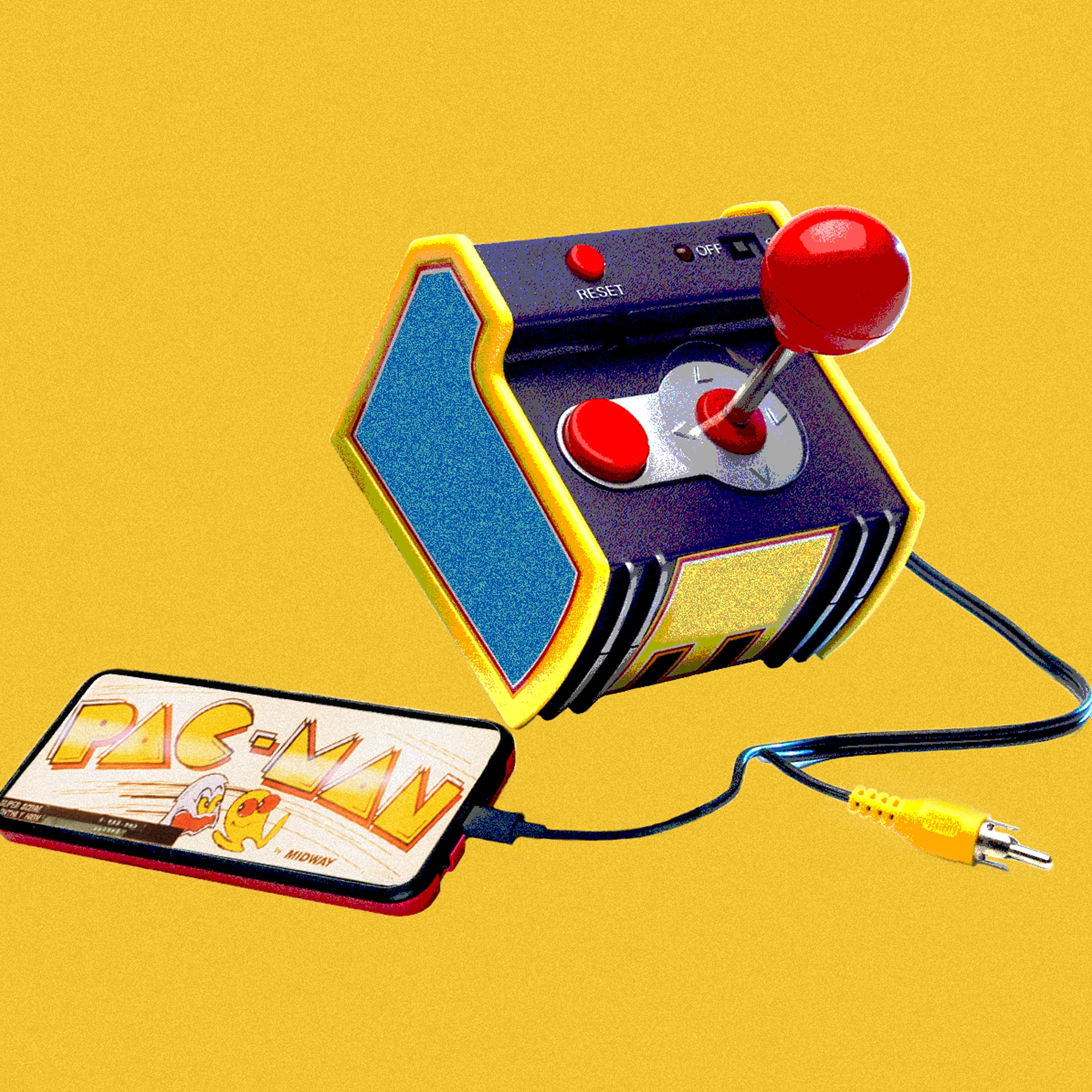Verdict
The Shure MV7+ is a versatile podcasting and content-creation microphone with rich, detailed audio that adds professional quality to your recordings. Having both USB-C and XLR inputs is handy, as is its on-board monitoring, mute control and level checker. It also looks excellent, with a sleek body, and offers a compelling choice for its price.
Pros
- Gorgeous, pro-grade recordings
- Fantastic compatibility
- Marvelous build quality
Key Features
- Dynamic cardioid microphone:The MV7+ features a cardioid pickup pattern that’s ideal for voices.
- USB-C & XLR connectivity:It also works with everything from PCs and Macs to mobile devices with both XLR and USB-C connectivity on offer.
Introduction
The Shure MV7+ is an updated version of one of Shure’s best-loved microphones, adding in small but useful changes to a mic that’s towards the upper-end of the price scale.
A £269 / $249 price tag isn’t wholly unreasonable for a top-class streaming mic with USB-C and XLR inputs, integrated pop filter, mount, and a low profile chassis. At that kind of money, it’s up against one of our favourite choices of recent months, the Logitech Blue Sona, so has a fair bit to do to come out on top, especially with the reputation that precedes the MV7+ and Shure themselves.
I’ve been testing the MV7+ for the last few weeks to see how well it fares against Logitech’s option, and against pricier Shure choices including the legendary SM7B.
Design
- Classy, pill-shaped chassis
- Flexible connectivity options
- No stand provided
There are some parallels in the design between the MV7+ and the SM7B in actual fact, as the MV7+ offers the same pill-shape design, of which half is taken up by a fabric wind muff, and the other is with the mic’s metal body.
Even with that compact stature though, the SM7B+ weighs in at 571g, which makes it quite hefty for a microphone. That’s arguably because of its entirely metal body, both on the main part of the mic, as well as on its mounting bracket, too. Make no mistake, the SM7B+ feels like a premium product.
Unlike the SM7B, you actually get some on-board controls here, with an RGB indicator around the middle that either glows red when the mic is muted or green when your voice is at an adequate level. It’s also touch-sensitive, so you can mute the MV7+ with a simple tap.
On the underside, the MV7+ connects via either XLR or USB-C, with only the latter coming in the box. USB-C connectivity is fully supported with this microphone, so you can either bung it straight into a PC, Mac or mobile device with the included cable, or utilise XLR for a more classic connection method. There is also a 3.5mm jack for on-board monitoring, too.
Much like the SM7B though, the MV7+ in its basic form lacks a stand or arm to connect to. You can purchase a first-party option in a bundle with the microphone to be ready to go out of the box, but otherwise, you’ll need to source your own mounting hardware. I had no trouble fitting it to my boom arm, but you will have to watch out that this microphone uses a 5/8-inch thread, as opposed to a 3/8-inch one, so just make sure you’ve got the relevant adapter.
Performance
- Rich pickup with noticeable warmth and clarity
- Consistent quality across XLR and USB-C
- Plug and play connectivity is convenient.
The MV7+ offers crystal-clear pickup with plenty of body and definition that’s perhaps expected, given Shure’s reputation, and the performance of the original MV7. It’s rich and detailed, with a reassuring warmth and low end that sits well with vocal work, especially with the mic’s cardioid pickup pattern.
Performance was consistent across both XLR and USB-C inputs, whether on my main Windows PC or MacBook Pro, although using USB-C in this case is preferable as you get access to features found in the MV7+’s software such as a digital pop filter.
It works plug-and-play too, being found when plugged into my Elgato Wave XLR without a hitch, and it worked completely fine in either Audacity or Adobe Audition, as well as in Shure’s software where you can make recordings.
Features
- MOTIV software offers access to a virtual mixer
- Compatible with Windows and macOS
- No way of controlling RGB lighting
Unlike the SM7B, Shure’s MV7+ actually has some features present, largely in the form of its MOTIV mix software. It may be basic, but it provides you with a virtual mixing desk for changing the gain level of the MV7+, as well as the volume of any headphones you’ve got plugged into the mic’s headphone jack for monitoring.
With the MV7+ recognised as its own device inside MOTIV Mix, there is also more granular control available. In this instance, you can choose tone, reverb and toggle everything from its high-pass filter to an automatic software-driven pop filter, as well as choose the bit-rate, frequency and file type of recordings.
Other than this, MOTIV Mix is threadbare, with no way of controlling the small RGB panel on the MV7+, for instance. Again, as this is a mic more aimed for professional use such as for podcasts, this isn’t much of a surprise, but still would have been pleasant to see.
There is also a mobile app for using the MV7+ with Android and iOS devices, Motiv Audio, which provides the same level of control as the desktop app, which is useful. The fact MOTIV mix also works with both Windows and macOS without an issue is handy, too.
Latest deals
Should you buy it?
You want detailed, pro-grade audio:
The MV7+ takes your recordings to the next level with pro-grade quality results that are rich, and detailed and come with a reassuring warmth.
You want something more affordable
As professional as the MV7+ sounds, it comes at a higher price. If you want a classy USB-C mic with its own stand and excellent performance, then the Logitech G Yeti GX is half the price.
Final Thoughts
The Shure MV7+ is a versatile podcasting and content-creation microphone with rich, detailed audio that adds professional quality to your recordings. Having both USB-C and XLR inputs is handy, as is its on-board monitoring, mute control and level checker.
It also looks excellent with a sleek body, and offers a compelling choice for its price. The Logitech Blue Sona offers an on-board EQ, which the MV7+ doesn’t, but Shure’s option comes with some useful software. It’s swings and roundabouts between the pair, but let it be known that the MV7+ offers some serious quality for the price.
How we test
During each microphone review, we conduct a series of recording tests that include sampling audio during ideal settings, with background noise applied and in an outdoor setting (where possible), to give you the best idea of how each device performs in real-world use.
Performance tested in a variety of conditions
Tested all available features
You might like…
FAQs
Does the Shure MV7+ work with a boom arm?
Yes, the Shure MV7+ works with a boom arm, as long as you have a 5/8-inch thread for mounting.
Does the Shure MV7+ need an interface?
It depends on the connection you choose, as the Shure MV7+ comes with both XLR and USb-C. For USB-C, it plugs straight into the device you’re recording on, while XLR will need an interface as a go-between.










